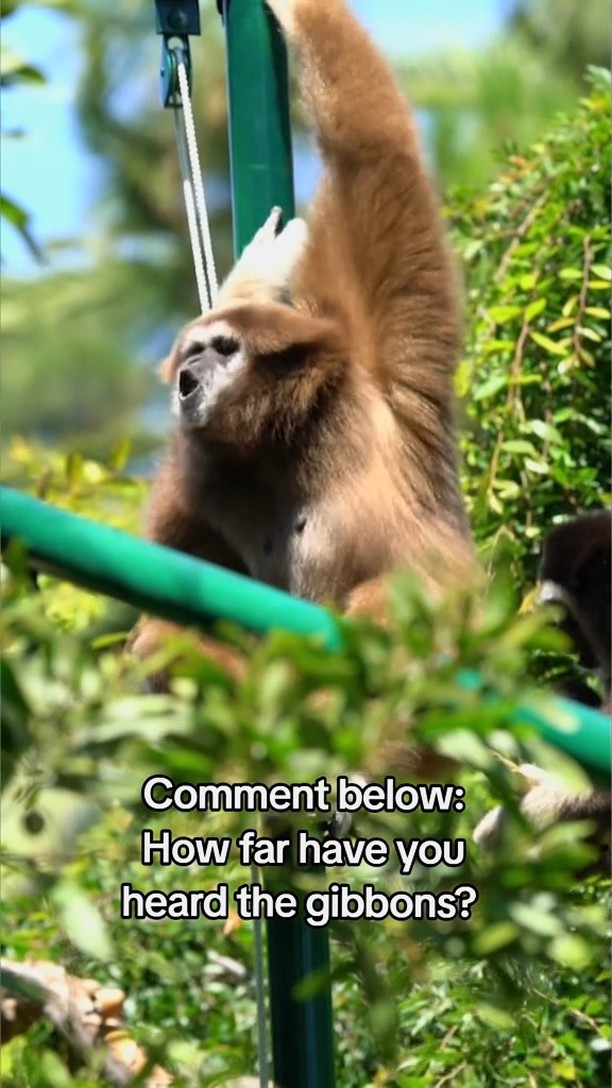- Characteristics of Gibbon Calls
- Acoustic Properties and Reach of Gibbon Calls
- Gibbons in Captivity: Sound and Environment
- Impact of Human Activity on Gibbon Communication
- Conservation Efforts for Gibbons
Gibbons, known for their distinct vocalizations, exhibit calls that resonate vividly across forests, traveling impressive distances. These calls serve crucial purposes in their natural habitats, such as territory establishment and communication. Let’s delve into the specifics regarding the characteristics and reach of gibbon calls, their behavior in zoo environments, and conservation initiatives aimed at preserving these unique primates.
Characteristics of Gibbon Calls
Gibbons are small, arboreal apes found primarily in Southeast Asia. They belong to the family Hylobatidae and are distinguished by their long arms and powerful, melodic calls. Both male and female gibbons contribute to vocalizations, often performing "duets" that can last for several minutes. Gibbon calls are not merely sounds but complex vocal displays consisting of a variety of notes and patterns. These calls serve multiple functions in the wild, including territory defense, mate attraction, and social bonding.
The structure of gibbon calls can differ among species. For instance, the calls of the siamangs, the largest of the gibbons, are characterized by deep, resonant booms facilitated by an inflatable throat sac, known as the gular sac. Other species, like the lar gibbon, produce quicker, more varied notes. Such diversity in calls indicates an evolutionary adaptation to different ecological niches and social structures.
Acoustic Properties and Reach of Gibbon Calls
The impressive reach of a gibbon’s call, which can extend more than a mile in dense forest environments, is attributable to both the physical attributes of the gibbons and the acoustic properties of their calls. These vocalizations are designed to travel long distances with minimal attenuation, helped by the specific frequencies they use. Lower frequencies tend to travel further as they are less likely to be absorbed by vegetation or the atmosphere.
Sound transmission in forests is influenced by numerous factors, including humidity, temperature, and vegetation density. Gibbons have adapted to these variables through their ability to modulate their calls, ensuring they remain effective for communication over large distances. These acoustic adaptations underscore the evolutionary importance of vocal communication in gibbon species.
Gibbons in Captivity: Sound and Environment
In zoos, the acoustic environment is markedly different from that of the wild. The concrete and metal structures, along with the presence of additional human and mechanical noises, can potentially interfere with the transmission of gibbon calls. However, despite these challenges, gibbon calls in zoos remain distinct and can still be heard over considerable distances.
Interestingly, zoos often amplify gibbon calls to enhance the visitor experience and provide insights into these primates’ natural behaviors. Observations have noted that gibbons in captivity can adapt their calling patterns in response to their environment. Zoo-keepers and wildlife specialists monitor these calls closely to assess the well-being and social dynamics of the gibbon populations.
Impact of Human Activity on Gibbon Communication
Human activities, such as deforestation and urbanization, significantly impact gibbon communication in the wild. The loss of habitat results in fragmented populations, which disrupts the normal transmission of calls and can lead to decreased genetic diversity due to isolation. Noise pollution from nearby human settlements further exacerbates the situation, interrupting the clear propagation of calls essential for maintaining social structures and reproductive success.
Conservationists stress the importance of preserving natural habitats to mitigate these effects. Establishing protected areas and corridors to connect fragmented forests enables gibbons to maintain their natural calling behaviors and ensures gene flow between populations. Human-induced noise reduction in these areas also plays a crucial role in supporting the acoustic environment necessary for gibbon communication.
Conservation Efforts for Gibbons
To combat the decline in gibbon populations, various conservation strategies are being implemented. The International Union for Conservation of Nature (IUCN) lists several gibbon species as endangered, driving international efforts to protect these primates. Conservation programs focus on habitat preservation, anti-poaching enforcement, and breeding programs both in situ and ex situ.
Collaboration between zoos and conservation organizations has proven pivotal. Zoos contribute to research on gibbon behavior and physiology while providing a controlled environment for breeding programs. In turn, these initiatives supply valuable genetic stock for potential reintroduction into the wild. Public education campaigns also play a vital role, raising awareness about the threats gibbons face and fostering support for conservation measures.
In summary, the call of a gibbon, capable of being heard over a mile away, encapsulates the delicate balance of nature’s acoustic communication systems. Understanding the intricacies of their vocalizations, especially within zoos, can shed light on the broader conservation challenges these primates face. Conservation efforts must continue to focus on habitat preservation and minimizing human disturbances, ensuring that gibbons’ calls remain a vibrant component of our world’s rich biodiversity.
*****
Source Description
A gibbon’s call can be heard more than a mile away, but how far can we hear it throughout the Zoo?


